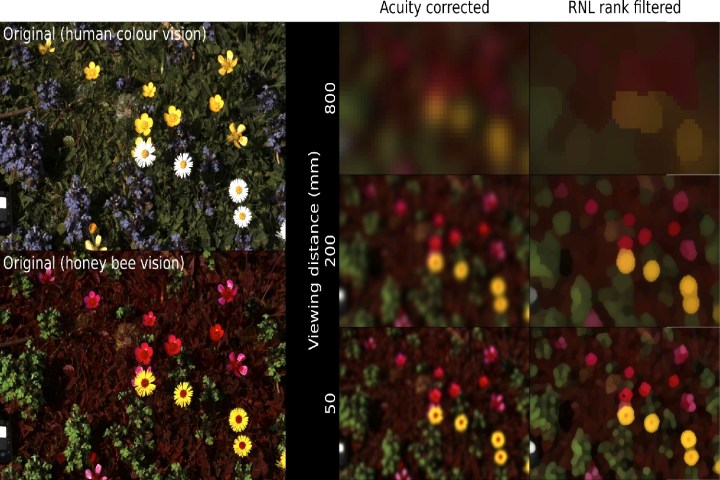
Animals and humans view the world very differently and, no, we’re not just talking about the activities we do or the vantage point we see things from. Every animal species experiences the world differently on a visual level, based on the way that their eyes have adapted to see colors, patterns, brightness levels and so on. Remember that special “Predator vision” from the Predator movies? Well, that, basically, but for everything from the smallest spiders upward.
If you’ve ever been curious about what these different types of animal vision look like, a team of researchers has you covered — and they’ve ever released the open-source, free software, called Quantitative Color Pattern Analysis (QCPA), so that you can test it out for yourself.
“We have created a piece of software that allows users to capture digital images, filter the visual information they contain according to the limitations of animal visual systems, analyze that data to gain highly detailed insights on the design and potential function of visual information, and lastly [visualize] that data,” Cedric van den Berg, a Ph.D. student at Australia’s University of Queensland, told Digital Trends. “QCPA unifies and greatly expands upon more than 40 years of formerly individual tools and methods for the study of animal vision and color patterns into a single, coherent and user-friendly analytical framework.”
Plenty of people checking out QCPA will likely be checking it out just for the novelty. But there are plenty of practical applications for scientists. For instance, knowing how animals perceive the world could help reveal new insights into things like camouflage or warning colorations that are there to defend against other animals. It could also be useful for gaining information about things like animal sexual signaling or territorial displays. In turn, it may be utilized for things like design, should a person want to create an object that is animal-friendly. “We are seeing new applications all the time as users have been taking up the framework and starting to use it,” van den Berg continued.
If you’re interested in taking a closer look, you can do so by visiting the group’s dedicated user platform at Empirical Imaging. Alongside the latest toolset, this is filled with user guides, tutorials, articles, and a moderated user forum.
“QCPA really is trying to invite discussion, collaboration, contribution and diversity around a ’round table mentality,’” van den Berg said. “We already have a huge list of things in our minds that we’d love to implement in the future — but I’ll need to finish my Ph.D. first [before] even thinking about that.”
A paper describing the work was recently published in the journal Methods in Ecology and Evolution.


